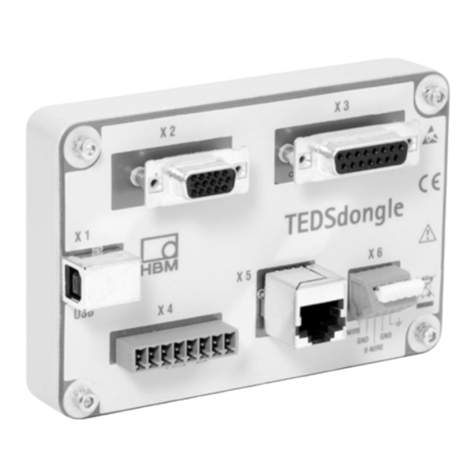
Adding an eXRCPU to eDAQ layers
The interface for installing an eXRCPU on eDAQ layers (1-EXR-E-ADT-2) (B) and six (6) 30mm screws may be purchased
separately from the eXRCPU. The interface is included in eXRCPU kits 1-EXR-E-32GB-2 and 1-EXR-E-64GB-2.
Required tools: #1 Phillips screw driver and 2.5mm ball hex driver (SO-123-1003006)
CAUTION
Failure to comply with safety requirements could result in bodily injury or damage to property. Only disassemble layers in ESD safe
conditions. Install only one data processor layer on an eDAQ layer stack. Do not install an eXRCPU on the interface before installing
the interface on an eDAQ layer. Interface screw holes are only accessible before the eXRCPU is installed on the interface. High
retention power connectors are used, therefore eXRCPU installation and removal may require some added force.
NOTE
An eXRCPU can support eight connected eDAQ layers (EDIO, EBRG, EHLS, ENTB and EITB). Any combination of these layers may
be connected, within the power limit of 100W. Every layer in an eDAQ stack must have a unique address (set using appropriate
jumpers).
1. Remove the CPU layer from an eDAQ stack. Disassemble a stack from the top down, due to alternating screw
positions in the rings.
2. Install a base (A) (without a battery) under the bottom eDAQ conditioning layer using six (6) screws. An optional base kit
(1-EBASE-eXRCPU-2), including six (6) 30mm screws, is sold separately.
3. Make sure each layer is set with a unique address using appropriate jumpers. Make sure jumper addresses ascend from
low to high (1, 2, 3...) under the eXRCPU (C). The layer with the lowest address (1) is the greatest distance from the
eXRCPU. Install the eDAQ layers on the top of the stack using six (6) screws each.
4. Carefully align the pins and connectors and install the interface (1-EXR-E-ADT-2) (B) on the top eDAQ conditioning
layer using six (6) 30mm screws.
5. Carefully align the pins and connectors and install the eXRCPU (C) on the interface (B) using eight (8) M3 8mm screws.
6. Connect the eXRCPU (C) to a 8–36 Vdc power supply using the power cable (1-EXR-PWR-PT-2).
7. The system is now ready for use.
NOTE
To retain the ball hex driver with the eXRCPU, install the M6 12mm screw low and center on the back of the eXRCPU.
Slide the driver under the screw and wedge the handle against the top of the lower case.
eXRCPU Quick Start Guide
Running a simple test
1. Open the web-based interface at the default
IP address 192.168.100.101. In the header,
click the Setup button to navigate to the
Test configuration section.
2. In theTask pane, select Setup, then click
the New button to define a new test setup.
Edit the setup name and description as
desired. The default name is "test_name."
3. In the Task pane, select Input channels,
then click the Add button. Select the
desired inputs and click OK. New channels
show in the All input channels tab of the
grid.
4. Click the Save button in the header or Task
pane to save changes.
5. In the header, click the Control button to
navigate to the Test and data control
section. In the Task pane, Test control
shows.
6. To view real time data, select a check box by
a name in the Channels panel. A chart for that
channel shows in the Display Views panel.
7. In the Task pane, click Start to run the test.
The yellow LED flashes in the status bar of the
web interface and on the unit. Real time data
shows in the channel chart during the test run.
8. Click Stop to end the test run.
9. To download the SIE data file, click the file
name in the Test run statistics panel.
Live data displays
To change the display, click
on the display panel and select a
new chart type.
Strip chart display.
Digital meter display.
Restoring Default Settings
Administrator profile & password
To regain administrator access:
1. Power down the eXRCPU.
2. Press and hold the power switch.
3. When the LEDs begin to flash, quickly
release the power switch.
NOTE
No other profiles or users are affected.
Network Settings
To reset the module IP address to
192.168.100.101:
1. Power down the eXRCPU.
2. Press and hold the power switch.
3. When the LEDs flash, stay on and start
flashing again, release the power switch.
NOTE
This procedure activates the Default Auto Set
network and does not delete any user-defined
networks.





















